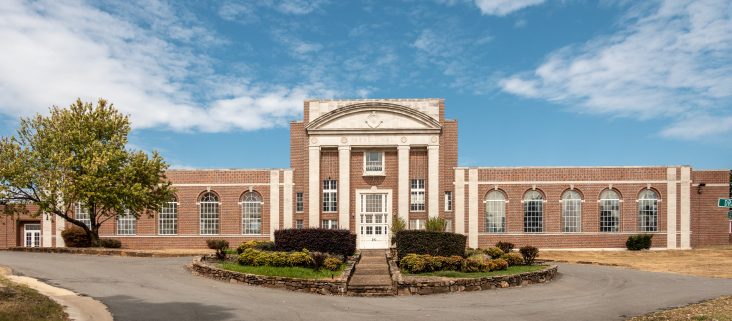Gov. Sanders promises upgrades to deaf, blind school campuses
by February 14, 2024 3:16 pm 569 views

Parnell Hall, Arkansas School for the Blind and Visually Impaired.
Students with the Arkansas School for the Deaf and the Arkansas School for the Blind and Visually Impaired will get new facilities. Gov. Sarah Sanders, Arkansas Secretary of Education Jacob Oliva and other officials announced Wednesday (Feb. 14) that final plans are being formulated to reconfigure a shared campus for the schools located in Little Rock’s Stift Station neighborhood.
A timeline for the construction was not released, but Sanders said she hopes work begins “quickly.” A cost for the project, which will include the construction of new primary learning facilities for both schools with some shared common use buildings, was not released, but Sanders noted that $30 million for this project was set aside by the legislature in 2021.
The facilities are outdated and the infrastructure for the schools is in disrepair. Oliva said they have been working for about a year to formulate a plan. State officials promised many years ago to take care of blind and deaf students in the state and those efforts have fallen short, Sanders added.
“To say I was speechless is an understatement,” Sanders said after she visited the campus. “Sadly, for far too long the state has failed to keep that promise … we’re going to fix these schools.”
Officials want to keep the campus on the current property. Critical safety plans will also be developed, Sanders said. One thing they consistently get asked about is expansion of services beyond the Little Rock campus and that will be taken into consideration as the campus and entire education program in the schools are revamped, the governor added.
The Arkansas School for the Deaf was first established in 1850. Many of the buildings and facilities in use by both schools were built more than 100 years ago, according to officials.
An assessment of the structures found that the dorms need to be upgraded, but new dorms didn’t need to be built, Sanders said. The proposed administrative structure would have one superintendent overseeing both schools with individual principals for each school.
Once the details are completed, Oliva said he thinks it could become one of the benchmark organizations that caters to deaf, blind and visually impaired students around the country.
“There is no reason why this can’t be a flagship program for all states,” he said.
